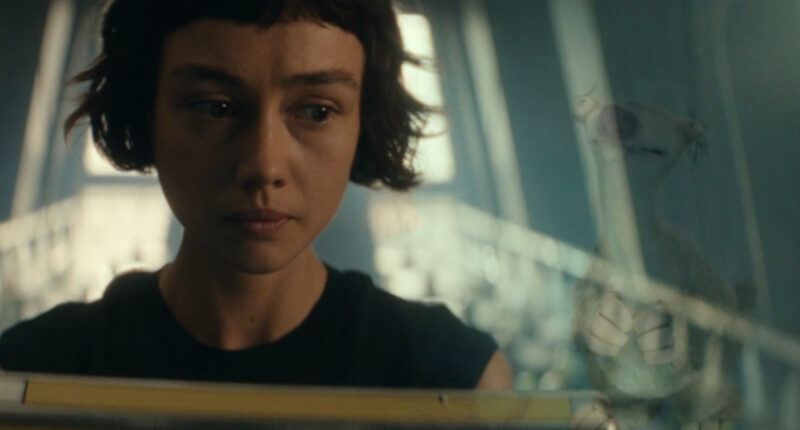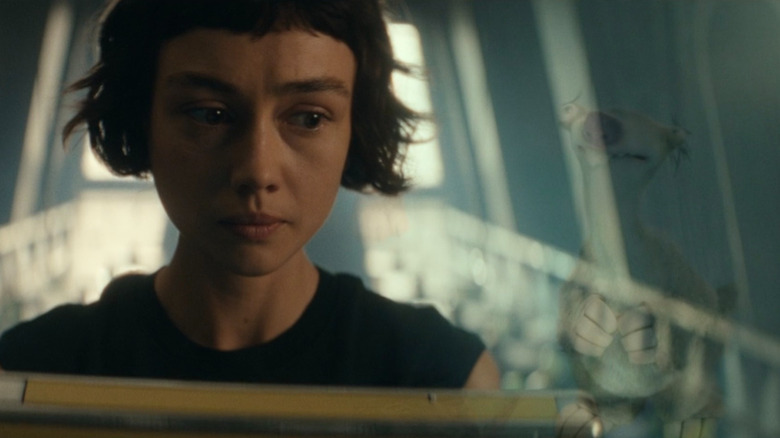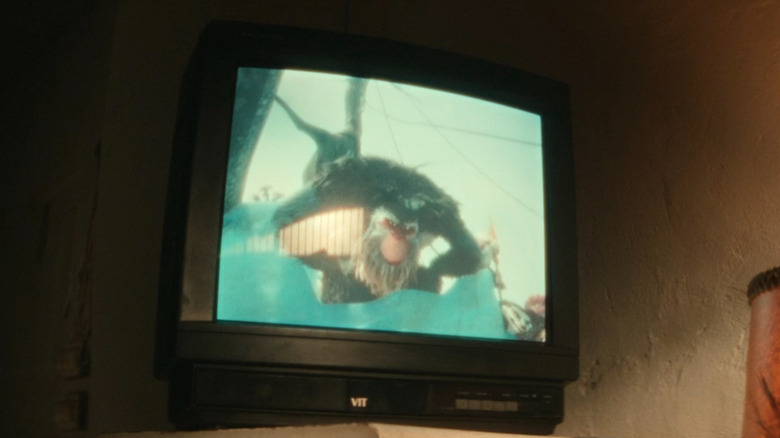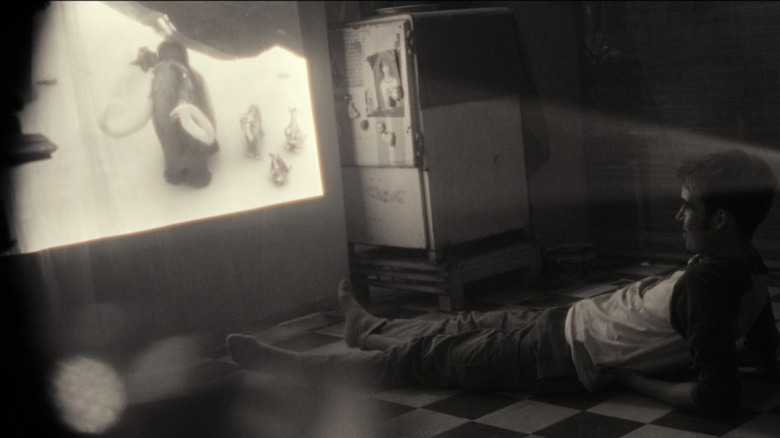Share this @internewscast.com
“Alien: Earth” injects an array of intriguing concepts into the enduring “Alien” series. Perhaps the most chilling aspect is not the presence of xenomorphs but the hybrids who have transplanted children’s minds into adult robotic bodies. The central theme questions how much of one’s humanity can be stripped away before they are no longer recognized as human. Interestingly, “Ice Age” movies remain incredibly popular, even 100 years in the future.
The reference to “Evil Dead” was notable, but this takes things up a notch. Among the odd elements in the initial episodes of “Alien: Earth” are repeated allusions to 2012’s “Ice Age: Continental Drift.” In a past moment, Joe (played by Alex Lawther) is seen watching the film. Later, Joe attempts to step down from his role, telling a robotic attendant, “Have a heart, or face my fury.” Wendy (Sydney Chandler), who hosts the mind of Joe’s sister Marcy (Florence Bensberg), hacks into the robot to comment, “Or face your furry what?” This is a nod to a line from “Continental Drift,” featuring a bizarre fade-in of Sid the sloth (voiced by John Leguizamo).
On the surface, the reason for including the film seems clear. It represents a bonding memory from Joe and his sister’s childhood, and Wendy’s hacking lets him know, subtly, that she’s still alive despite his belief of her death. Moreover, as “Ice Age” and “Alien” are both under the umbrella of 20th Century Studios, it’s practical to use something already in the studio’s vault. However, there may be a deeper purpose for featuring “Ice Age: Continental Drift” in “Alien: Earth.”
Does Ice Age: Continental Drift foreshadow the events of Alien: Earth?
“Alien: Earth” is set in 2120, making Joe and Marcy/Wendy nostalgic for a film that’s been around for 108 years. Yet, “Ice Age” is a well-loved franchise, likely granting it cultural endurance. While it’s curious they hold a particular affection for “Continental Drift,” the series’ fourth installment, it’s possible that the show’s creator, Noah Hawley, is hinting at future events.
“Ice Age: Continental Drift” suggests Pangea’s breakup, with the main characters adrift on a floating iceberg. It concludes with their home destroyed and a whale named Precious guiding them to a bountiful new land. On “Alien: Earth,” humanity seems to be thriving in 2120, but this stability may not last long. At the end of “Alien Resurrection,” Ripley 8 (Sigourney Weaver) and Call (Winona Ryder) find an Earth that’s become a barren, lifeless landscape. During Ripley’s absence, the planet undergoes dramatic transformations that make it unrecognizable to her.
“Alien Resurrection” is set in 2381, over 250 years after the events of “Alien: Earth.” This leaves ample time for humanity’s missteps, yet the chain of events could begin now. Should “Alien: Earth” continue beyond its first season, we might witness Earth’s evolution into a catastrophic state, mirroring the fate depicted in “Ice Age: Continental Drift.”
Alien: Earth could plant the seeds for humanity’s doom
“Alien: Earth” opens with a Weyland-Yutani vessel, carrying not just xenomorphs but other terrifying aliens, crashing into a city on Earth. Boy Kavalier (Samuel Blenkin), CEO of the Prodigy corporation, sends his new hybrids into the wreckage to retrieve what they can. With so many different types of alien species on board, it wouldn’t be unheard of for one to carry a deadly pathogen that humanity isn’t equipped to stop. After all, Call mentions in “Alien: Resurrection” how humanity suffered at the hands of something called the “Lacerta Plague.” What if one of these creatures, perhaps the xenomorph itself, is responsible for making the plague run amok?
The “Alien Resurrection” novelization takes it a step further and slightly changes the line to refer to it as the “Lacerta Worm Plague.” One of the creatures onboard Weyland-Yutani’s ship looks pretty worm-like. It’s a bit of wild speculation, but Noah Hawley could be laying the groundwork for this otherwise inconspicuous species to break containment and infect most of humanity with some sort of terrible disease, explaining why Earth is barren in the future and why humanity has become an interplanetary species.
Just like the animals in “Ice Age: Continental Drift” need to find a new home, humanity in the “Alien” franchise needs a fresh habitat as well, and it could be hastened with a deadly pandemic introduced later on “Alien: Earth.” It’s just a theory — and a pretty big stretch at that — but you heard it here first.












